#disney Ls
Text
Be Nimona:
>Originally made as a subversion of the usual fantasy stories and superheroes in comics with a bloodthirsty MC, an implied Homosexual relationship between a Villain and a Hero, and a relatively dark story and ending
>Get Picked up and get animated by Blue Sky Studio(Ice Age, Rio, Spies in Disguise etc etc)
>Gets finished 90% of the way
>Disney buys Blue Sky, dismantles it and throws said 90% of progress to the void archives that is Disney's unfinished projects
>Gets picked up by Netflix
>Netflix allows the story to not only stay consistent with the comic but doubles down on the "controversial" parts of it(Homosexuality is now prevalent, lots of murder-y things and gore)
> Is released as a KIDS MOVIE
>Gets released in the same time frame as Disney's 100 Year celebration
>Gets nominated for an Oscar
>BEATS disney's own movie for the time frame
>Gets released FOR FREE in youtube for everyone to see what Disney ditched
10K notes
·
View notes
Text
Nimona (Official Netflix Full Film for free)
youtube
Producer = Annapurna Pictures
Publisher = Netflix
#nimona#netflix#official#free#oscar nominations#oscar nominee#lgbtq#lgbt#lgbtqia+#lgbtq community#pride#not a dream#nimona x ballister#Youtube#blue sky#disney regret#disney Ls#ballister boldheart#nimona netflix#nimona movie#blue sky forever#free movie download#free movies#free movie#youtube
9 notes
·
View notes
Text





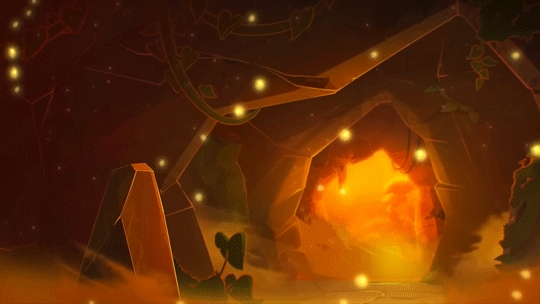

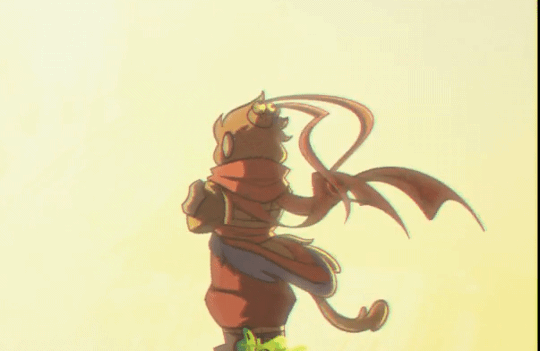
#lego monkie kid#lmk sun wukong#spotify#lmk mk#no me odien si entinden ls referencia .#disney#disney songs
43 notes
·
View notes
Text
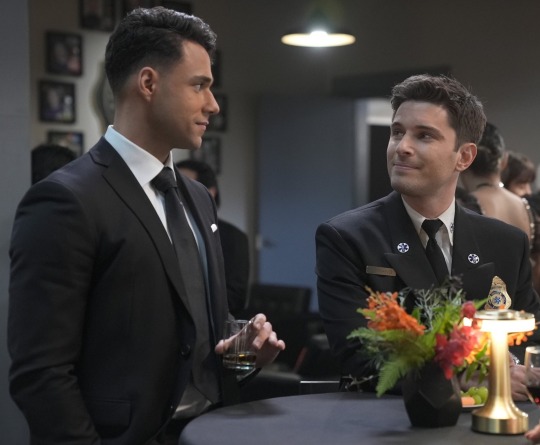

ACTUAL DISNEY PRINCES.
#carlos reyes in a suit tk strand in a suit all glammed up and stunning TARLOS SHUT UPPPPP#they're literally GLOWING#like actual disney princes right next to each other#😭#and we're supposed to survive a two hour finale wedding when fiancés era has us on the ropes already jsjsjs#911 lone star#911 ls#tk strand#carlos reyes#ronen rubinstein#rafael silva
120 notes
·
View notes
Text
also l.s.dunes were in Orlando last night at House Of Blues on the Disney Springs property and they’re playing there again tonight which means they’re spending the day in town or possibly at Disney 👀👀👀
#I bet Frank wants to go to Star Wars at Disney#they played house of blues at Disney springs so it wouldn’t surprise me if they did a Disney activity today#if anyone sees them please tell them I said hi and I love them#ls dunes#l s dunes
2 notes
·
View notes
Text
i can't even dare look at my dash for more than 5 secs until i watch the new 911 ls episode 😭
#in turkey we have 911 ls on disney+ but i think they're gonna upload the new episode tomorrow 😭#when it's uploaded to hulu#s#if anyone knows another way to watch send it my way pls
4 notes
·
View notes
Photo



220929 Disney Plus Korea’s Instagram Post | © disneypluskr
재밌었던 BTS 촬영 현장...벌써 그립다✨
무슨 촬영인지 궁금하다면 디즈니+ 유튜브로!💨
<BTS: PERMISSION TO DANCE ON STAGE – LA>
디즈니+에서 지금 스트리밍 중!
#PermissionToDance #BTS_on_DisneyPlus #방탄소년단
#BTS #RM #Jin #SUGA #jhope #Jimin #V #JungKook
#ot7#jin#suga#jhope#rm#jimin#v#jungkook#220929#instagram#e:proof#Permission To Dance On Stage LA#disney plus#ls
3 notes
·
View notes
Text
s3e1 of daredevil is just yelling @ matt and the tv
#i’m back on my bullshit#daredevil#also. finished the defenders. had minimal thoughts. i barely care about the hand or elektra.#me: daredevil season 2 is not my favorite bc the hand/elektra. defenders: just wait ! we’ve got more!#hilarious that a fucking building falls on matt and he gets up anyways#foggy looks so good. good for him#karen and foggy’s friendship <33#also fisk! missed a villain that wasn’t an immortal ninja cult#absolutely yelling at the part of matt wanting to be executed on his first night back out#if matt could stop taking so many fucking Ls back to back. god#also i finally have a tv that can do disney plus now and i feel like a content grown adult :’)#being able to sit on MY couch in MY house and watch MY tv at 2am. etc etc good things do happen
4 notes
·
View notes
Text
Complaining online simply isnt enough i need to set fire to disney
#theres no savinf it brooo wtf#how do they take Ls like its a hobby#every day is another L for disney#anti disney
6 notes
·
View notes
Text
FOX and Disney seemingly reaching an agreement for the renewal of Lone Star but still debating 9-1-1, is honestly scaring the shit outta me.
#but apparently this is a good thing? because disney can't move the og to another network#911#911 ls#liberty's weird and wonderful text posts
5 notes
·
View notes
Text
Boy am I glad that DreamWorks isn't making crappy live action remakes of their classics. Or just live action remakes in general.
I'd never survive it.
0 notes
Text
Film Grammar for Simmers
What is film grammar?
"Film grammar" refers the unstated "rules" of editing used in movies and TV. Different types of shots have different associations and are used by editors to convey different types of information to the audience. Many of these principles were first described in the early 20th century by Soviet directors, but they're used consistently across genre, medium, and even language: Bollywood musicals, English period dramas, Korean horror movies, and American action blockbusters all use many of the same techniques.
Because these rules are so universal, virtually everyone has some internalized understanding of them. Even if they can’t name the different types of shots or explain how editors use images to construct meaning, the average person can tell when the “rules” are being broken. If you’ve ever thought a movie or episode of TV was confusing without being able to say why, there’s a good chance that there was something off with the editing.
Learning and applying the basics of film grammar can give your story a slicker and more-polished feel, without having to download shaders or spend hours in photoshop. It also has the bonus of enhancing readability by allowing your audience to use their knowledge of film and TV to understand what's happening in your story. You can use it to call attention to significant plot details and avoid introducing confusion through unclear visual language.
Best of all, it doesn't cost a dime.
The basics: types of shots
Shots are the basic building block of film. In Sims storytelling, a single shot is analogous to a single screenshot. In film, different types of shots are distinguished by the position of the camera relative to the subject. There are three big categories of shots, with some variation: long shots (LS), medium shots (MS), and close-ups (CU). This diagram, created by Daniel Chandler and hosted on visual-memory.co.uk illustrates the difference:
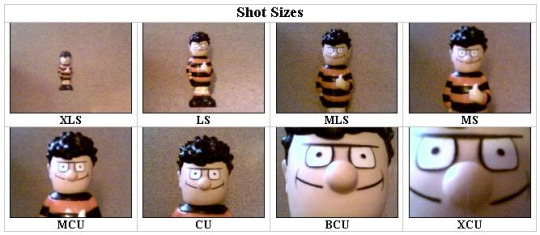
Source: The 'Grammar' of Television and Film, Daniel Chandler, visual-memory.co.uk. Link.
In film, scenes typically progress through the different types of shots in sequence: long shot, medium shot, close-up. When a new scene begins and the characters arrive in a new location, we typically begin with a wide establishing shot of the building’s exterior to show the audience where the scene will be taking place. Next comes a long shot of an interior space, which tells the where the characters are positioned relative to one another. The next shot is a medium shot of the characters conversing, and then finally, a close-up as the conversation reaches its emotional or informational climax. Insert shots are used judiciously throughout to establish themes or offer visual exposition.
Here's another visual guide to the different types of shots, illustrated with stills from Disney animated films.
This guide is almost 2,000 words long! To save your dash, I've put the meat of it under the cut.
Long shot and extreme long shots
A long shot (sometimes also called a wide shot) is one where the entire subject (usually a building, person, or group of people) is visible within the frame. The camera is positioned far away from the subject, prioritizing the details of the background over the details of the subject.
One of the most common uses of long shots and extreme long shots are establishing shots. An establishing shot is the first shot in a scene, and it sets the tone for the scene and is intended to give the viewer the information they’ll need to follow the scene: where a scene is taking place, who is in the scene, and where they are positioned in relation to one another. Without an establishing shot, a scene can feel ungrounded or “floaty.” Readers will have a harder time understanding what’s happening in the scene because on some level, they’ll be trying to puzzle out the answers to the who and where questions, distracting them from the most important questions: what is happening and why?
(I actually like to start my scenes with two establishing shots: an environmental shot focusing on the scenery, and then a second shot that establishes the characters and their position within the space.)
Long shots and extreme long shots have other uses, as well. Because the subject is small relative to their surroundings, they have an impersonal effect which can be used for comedy or tragedy.
In Fargo (1996) uses an extreme long shot to visually illustrate the main character’s sense of defeat after failing to secure funding for a business deal.The shot begins with a car in an empty parking lot, and then we see the protagonist make his way up from the bottom of the frame. He is alone in the shot, he is small, and the camera is positioned above him, looking down from a god-like perspective. All of these factors work together to convey his emotional state: he’s small, he’s alone, and in this moment, we are literally looking down on him. This shot effectively conveys how powerless he feels without any dialogue or even showing his face.
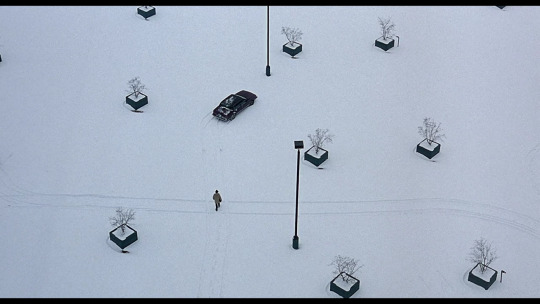
The same impersonal effect can also be used for comic purposes. If a character says something stupid or fails to impress other characters, cutting directly from a close-up to a long shot has a visual effect akin to chirping crickets. In this instance, a long shot serves as a visual “wait, what?” and invites the audience to laugh at the character rather than with them.
Medium Shots
Medium shots are “neutral” in filmmaking. Long shots and close-ups convey special meaning in their choice to focus on either the subject or the background, but a medium shot is balanced, giving equal focus to the character and their surroundings. In a medium shot, the character takes up 50% of the frame. They’re typically depicted from the waist-up and the audience can see both their face and hands, allowing the audience to see the character's facial expression and read their body-language, both important for interpreting meaning.
In most movies and TV shows, medium shots are the bread and butter of dialogue-heavy scenes, with close-ups, long shots, and inserts used for punctuation and emphasis. If you’re closely following the conventions of filmmaking, most of your dialogue scenes will be medium shots following the convention of shot-reverse shot:
youtube
To keep long conversations from feeling too visually monotonous, consider staging the scene as a walk-and-talk. Having two characters move through a space can add a lot of dynamism and visual interest to a scene that might otherwise feel boring or stiff.
Close Ups
Close-ups are close shots of a character’s face. The camera is positioned relatively near to the subject, showing just their head and shoulders. In a close-up, we don’t see any details of the background or the expressions of other characters.
In film, close-ups are used for emphasis. If a character is experiencing a strong emotion or delivering an important line of dialogue, a close-up underscores the importance of the moment by inviting the audience to focus only on the character and their emotion.
Close-ups don’t necessarily need to focus on the speaker. If the important thing about a line of dialogue is another character’s reaction to it, a close-up of the reaction is more effective than a close-up of the delivery.
One of the most iconic shots in Parasite (2019) is of the protagonist driving his employer around while she sits in the backseat, speaking on the phone. Even though she’s the one speaking, the details of her conversation matter less than the protagonist’s reaction to it. While she chatters obliviously in the background, we focus on the protagonist’s disgruntled, resentful response to her thoughtless words and behavior.

In my opinion, Simblr really overuses close-ups in dialogue. A lot of conversation scenes are framed entirely in close-ups, which has the same effect of highlighting an entire page in a textbook. The reader can’t actually tell what information is important, because the visuals are screaming that everything is important. Overusing close-ups also cuts the viewer off from the character’s body language and prevents them from learning anything about the character via their surroundings.
For example, a scene set in someone’s bedroom is a great opportunity for some subtle characterization—is it tidy or messy? what kind of decor have they chosen? do they have a gaming computer, a guitar, an overflowing bookshelf?—but if the author chooses to use only close-ups, we lose out on a chance to get to know the character via indirect means.
Inserts
An insert shot is when a shot of something other than a character’s face is inserted into a scene. Often, inserts are close-ups of a character’s hands or an object in the background. Insert shots can also be used to show us what a character is looking at or focusing on.
In rom-com The Prince & Me (2004) (see? I don’t just watch crime dramas…) the male lead is in an important meeting. We see him pick up a pen, look down at the papers in front of him, and apparently begin taking notes, but then we cut to an insert shot of his information packet. He’s doodling pictures of sports cars and is entirely disengaged from the conversation. Every other shot in the scene is an establishing shot or a medium shot or a close-up of someone speaking, but this insert gives us insight into the lead’s state of mind: he doesn’t want to be there and he isn’t paying attention.

Insert shots are, in my opinion, also used ineffectively on Simblr. A good insert gives us extra insight into what a character is thinking or focusing on, but a poorly-used insert feels…unfocused. A good insert might focus on pill bottles on a character’s desk to suggest a chemical dependency, on a family picture to suggest duty and loyalty, on a clock to suggest a time constraint, on a pile of dirty laundry or unanswered letters to suggest a character is struggling to keep up with their responsibilities. An ineffective insert shot might focus on the flowers in the background because they’re pretty, on a character’s hands because it seems artsy, on the place settings on a dining table because you spent forever placing each one individually and you’ll be damned if they don’t make it into the scene. These things might be lovely and they might break up a monotonous conversation and they might represent a lot of time and effort, but if they don’t contribute any meaning to a scene, consider cutting or repurposing them.
I want to emphasize: insert shots aren’t bad, but they should be carefully chosen to ensure they’re enhancing the meaning of the scene. Haphazard insert shots are distracting and can interfere with your reader’s ability to understand what is happening and why.
Putting it all together
One of the most basic principles of film theory is the Kuleshov effect, the idea that meaning in film comes from the interaction of two shots in sequence, and not from any single shot by itself. In the prototypical example, cutting from a close-up of a person’s neutral expression to a bowl of soup, children playing, or soldiers in a field suggests hunger, worry, or fear, respectively.
youtube
The Kuleshov effect is the essence of visual storytelling in a medium like Simblr. You can elevate your storytelling by thinking not only about each individual shot, but about the way they’ll interact and flow into one another.
Mastering the basics of film grammar is a great (free!) way to take your storytelling to the next level. To learn more, you can find tons of guides and explainers about film grammar for free online, and your local library doubtless has books that explain the same principles and offers additional analysis.
Happy simming!
#armorica tips#armorica ooc#i finally got off my ass to finish this guide which i started back in August right before I got extremely sick and ended up in the hospital#anyway....hope you enjoyed this post which was a veiled excuse for me to complain about how people overuse close-ups and inserts#and i can't tell what's happening in their stories ;fdsklsjadf;laksdf#Youtube
322 notes
·
View notes
Text
it’s no surprise but lego, with all the money they have and how ubiquitous their brand is, contacting ls dunes and telling them to take down their grey veins video just is a reminder that companies that are built on childhood love and core memories that follow us into adulthood don’t actually care about the impact they’ve had on so many lives and the love they create. at least not more than money. and of course they don’t.
it’s always about more money for those who already have so much of it. more control over a product or idea they monopolize.
disney and lego and all those “childhood” brands feed into nostalgia and love and creativity as marketing tools because they know what drives people. they just care about using your heart to take your money.
this isn’t at all to say don’t love what you love. but know the corporations are never on your side.
no corporation is.
38 notes
·
View notes
Note
Frustrated to see how Hunt/low gets shoved everywhere after that chibi episode. When I was watching chibi Lumity edits on Tiktok, I felt annoyed when seeing comments about "Hunt/low kiss, Hunt/low canon". Like get that boring and annoying ship away! These edits aren't about Hunt/low with no scenes about them, no tag about them.
It's unfair how Disney puts Hunt/low in that chibi episode and not Raeda.
Big fucking yikes, but not surprised since h/ls can't not force their ship down others' throats, including storyboard artists that ship it, too, or even bother to respect when something is not about them. But yeah, I'm actually really disappointed in Disney and the crew that Raeda, a canon queer ship, was not in there while a non-canon straight "passing" ship was.
#taako talks#ive never met a hunt/low that can stay in their own lane#asks#anons#toh#the owl house#huntl0w negative
8 notes
·
View notes